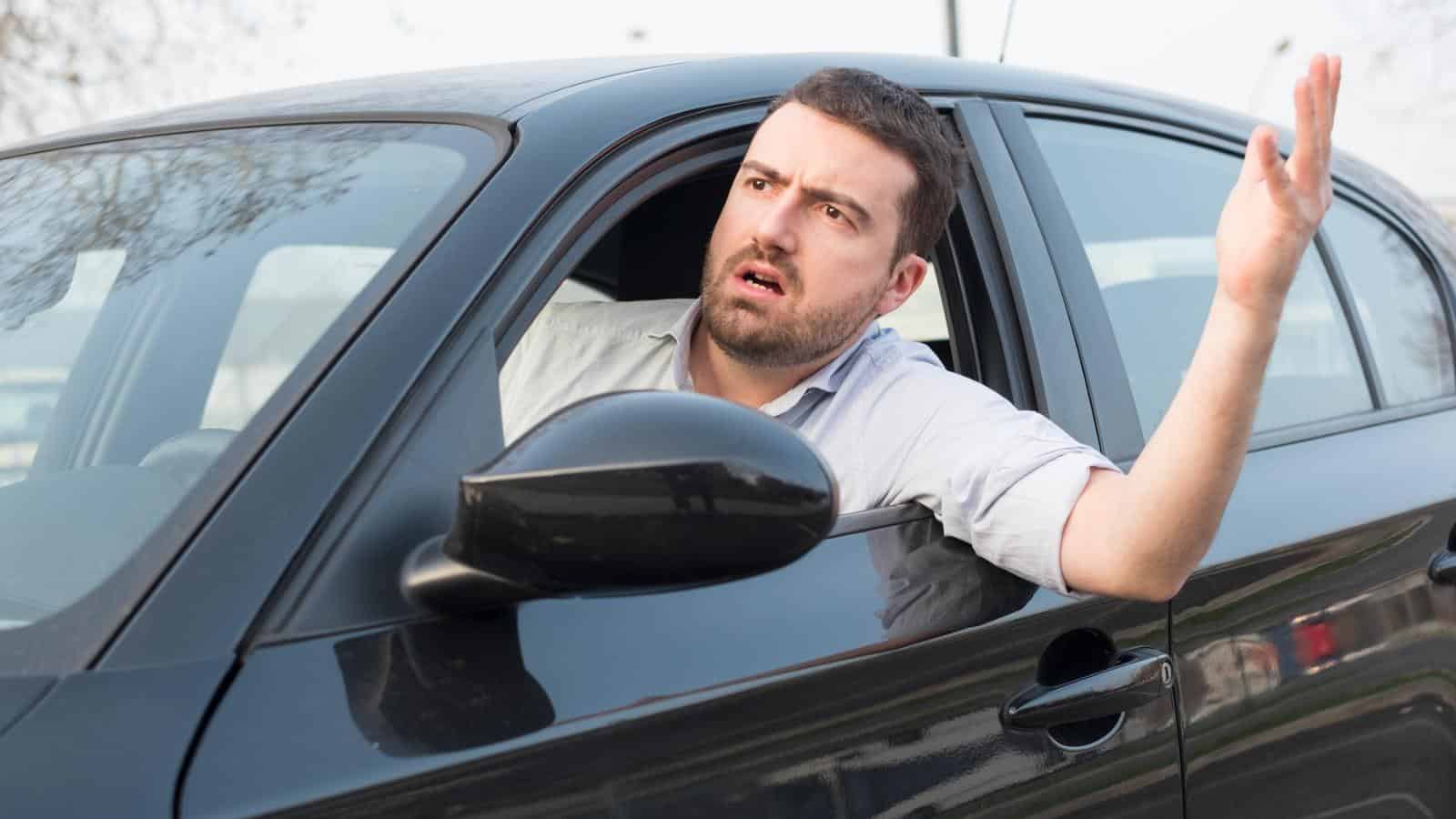For millions of Brits, cars play a crucial role in daily life—whether it’s commuting to work, picking up the kids from school, or visiting family and friends. Despite their importance, cars can also harbor hidden dangers that we may not immediately notice. To show you what we mean, here are 18 common hazards that can be found in our vehicles.
Inadequate Insurance Coverage

Paying for minimal insurance coverage may be tempting to save money, but it comes with risks. Yahoo! Finance warns that it can lead you to be sued after causing an accident, saying “insurance won’t cover any repair or replacement of a policyholder’s own vehicle,” and you may be forced to pay out of pocket for a rental vehicle.
Night Driving

Driving at night is often unavoidable, but it’s generally far more dangerous than driving in the day time. The reduced visibility, even with high-beam headlights, is greatly reduced, leaving you with less time to react to hazards on the road.
Poor Vehicle Maintenance

Regular vehicle maintenance checks will pick up on problems with brakes, lights, and tires, which will then be fixed before they cause any accidents. Skipping regular maintenance can lead to accidents and breakdowns, so it’s important to have your vehicle checked at least once a year.
Driving Under the Influence

Alcohol loosens inhibitions, so even when drunk drivers know that driving under the influence is dangerous when they are sober, they often believe that they will be fine. However, the NHTSA reports that “about 31% of all traffic crash fatalities involve drunk drivers.”
Overloading the Vehicle

It may be tempting to overload your car when moving home, traveling long distances, or going on road trips. However, exceeding the weight limit of your vehicle will make it harder to control, build up and maintain speed, and reduce visibility out of its rear windows.
Aggressive Driving and Road Rage

Road rage is often considered a minor or even amusing problem in the UK, but in reality, we should probably take it more seriously. Every day, serious arguments and sometimes even violence arise from road rage, which can potentially lead to damage not only to our vehicles but to ourselves.
Steering Wheel Decorations

Steering wheel decorations can be a fun way to personalize your car without breaking the bank, but they can be dangerous. Rhinestones or pearls on the decoration can become projectiles during accidents, acting like shrapnel and injuring you.
Ignoring Safety Features

Disabling or ignoring built-in safety features in your car, such as seat belts, airbags, and advanced driver-assistance systems (ADAS), can be dangerous. ADAS can detect pedestrians, assist in parking, and automatically break in emergencies.
Child Safety

Car seats and boosters reduce children’s risk of injury during accidents. The CDC points to data showing that “car seat use reduces the risk for injury in crashes by 71–82% for children, compared with seat belt use alone.”
Water Bottles

Water bottles in your car should be secured in a bag, cup holder, or trunk. If they slide free or fall from your lap, they can become wedged under the pedals, making it impossible to brake effectively and causing accidents.
Mechanical Failures

Brake failure and steering issues are common mechanical failures in cars that lead to accidents, so it’s critical to respond calmly and safely while driving. Taking your vehicle for inspection regularly will lower the risk of unexpected failures.
Distracted Driving

Nearly everyone has a smartphone, constantly vying for their attention with notifications. The New York Times recently reported that there “remains no definitive database of the number of crashes or fatalities caused by cellphone distraction,” but that they are likely involved in many accidents.
Unsecured Cargo

Improperly securing roof loads on your vehicle can cause them to fall off when driving or braking, leading to accidents for drivers behind you. Interior cargo can also cause injuries and lead to legal troubles.
Tailgating

Driving too closely to the driver ahead of you will reduce both the time and distance to react when they break, increasing the chance of a rear-end collision. It’s important to follow the three-second rule when driving, but it needs to be longer during icy and snowy conditions.
Pets in the Front Seat

In the event of a crash, unrestrained pets could be injured and might be hurt by the airbags. American Humane says it’s best not to leave animals in the front seat; instead, “properly restrain, contain or crate your pets inside of your vehicle.” Also remember that cars can heat up fast, so in warm weather, avoid letting your pet stay in the car alone.
Feet on the Dashboard

Sitting in the passenger seat for hours on end can leave people restless and wanting to stretch their legs. However, resting their feet on the dashboard can lead to nasty injuries during a collision, including broken bones, dislocations, or even amputations.
Teen Drivers

Teen drivers, particularly men, are at an especially high risk for crashes, injuries, and even deaths. The risk is highest in the months after they receive their license due to their inexperience in driving unsupervised.
Elderly Drivers

Elderly drivers face unique challenges, including slower reaction times and poor eyesight. It’s important to talk to your elderly relatives if you feel they’re experiencing driving issues to protect them and other drivers on the road.

